Things to Know About New Zealand: A Guide to the Practical and Quirky
There is a whole list of things I was wondering about New Zealand before I arrived for a working holiday. Mostly the practical stuff like the time difference, climate, currency, etc. Then there are all the little quirky things I’ve learned since I’ve arrived that I wasn’t wondering about at all.
Here’s a breakdown of some useful things to know about New Zealand before you travel there. Plus, some observations I made about the subtle differences from life in the US.
My observations are not a commentary on one country being better than the other.
Practical Things to Know About New Zealand
Time Difference
New Zealand Standard Time (NZST) is GMT+13. So, if you are on the East Coast of the United States, the time in NZ will be 18 hours ahead. Example: 10:30 AM on Monday in Boston, MA = 4:30 AM on Tuesday in Wellington, NZ.
For a couple of weeks in March/April, when the US ends Daylight Savings earlier than anyone else, New Zealand is ahead by only 17 hours. It goes back to the regular 18 hours ahead of Eastern Standard Time (EST) when Daylight Savings ends in NZ on the first Sunday of April.
There are 2 time zones. New Zealand Standard Time (NZST) and Chatham Standard Time (CHAST). This isn’t really relevant, but just a nerdy fact that my nerdy self had to mention. Chatham Standard Time is +45 minutes ahead of NZST. Where else does this happen in the world? If you know, please share!
Traveler Tip: Use the World Clock on your smartphone to easily keep track of the best times to Facetime (or Skype, WhatsApp, Google Hangout) with friends and family at home. Add your home time zone and your current time zone, plus any other time zones where people you know live.
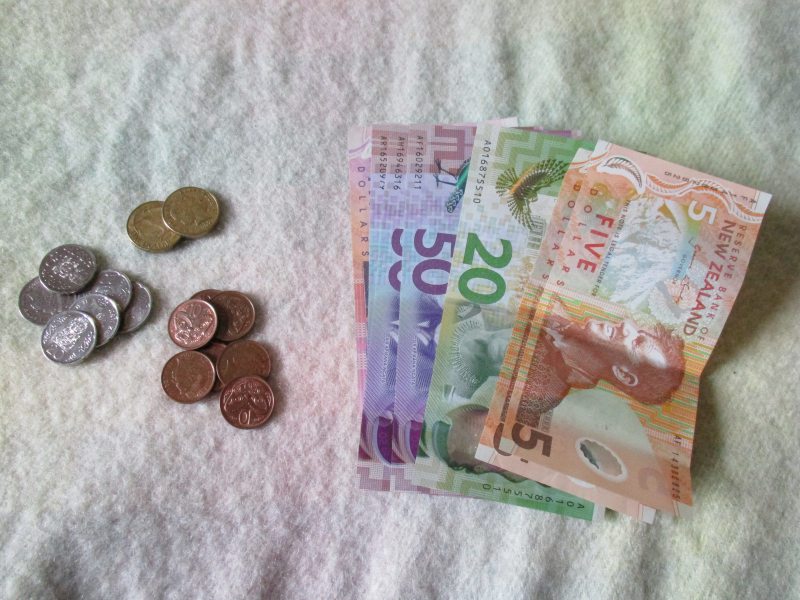
Currency
The currency in New Zealand is the New Zealand Dollar (NZD). Banknotes come in an array of colors and feel like they are made of plastic. Denominations include $5, $10, $20, $50 and $100 banknotes and $1, $2, 10c, 20c, and 50c coins.
The exchange rate for the United States Dollar (USD) is currently about 1 USD = 1.4 NZD. This is a pretty good deal for visitors from the US! For every US Dollar, you will gain 40 cents.
It’s pretty easy to quickly do the math in your head when you want to estimate how much an item would cost in USD. What I do is subtract $4 for every $10 in the total. For example, a $20 NZD visit to the movies is $12 USD. Or a $50 NZD grocery store bill will be around $30 USD.
Traveler Tip: Get up to the minute rates using the XE Currency Exchange app on your smartphone. See other useful travel apps, websites, and services that I use and recommend on my Travel Resources page.
Sun Safety
Sun safety is no joke on this side of the world. Due to a hole in the atmosphere’s ozone layer, you can burn easily in New Zealand (and Australia).
Nerdy Science Stuff: Just like the Earth has different layers, so does our atmosphere. Ozone, located in the Earth’s stratosphere, absorbs ultraviolet radiation from the sun, but it is able to sneak in through this hole. Hooray for my geography degree!
So, be prepared to slather yourself with SPF 40+ sunscreen on a daily basis. Don’t forget your ears and wear a hat! Typical burn time in New Zealand is about 10 minutes. That is, you can be in the sun for up to 10 minutes without protection before you begin to burn. That’s it, just 10 minutes!
During my first week here I got a blister on my cheek just under my eye, and I was wearing a natural brand of SPF 40 sunscreen. I’m pretty sure it was expired and I figured it had to still work.
The blister was painful, oozed clear liquid just like any other blister would, and took about a month to fully heal. I switched from the natural ingredient sunscreen I was using to a more standard type and haven’t burned at all since.
Here are my suggestions for sun protection in New Zealand:
- A Good Hat – a straw hat, moisture-wicking hat, or even a baseball cap will keep the sun off your face.
- SPF 40 Sunscreen – Make sure it isn’t expired! This is something most travelers will buy once they arrive at their destination. I suggest packing a small container with your toiletries to be prepared upon arrival. Trust me, you do not want one of those blisters. I really like Supergoop products but you go with your favorite brand. Sunscreen sticks are super portable and pose less of a risk of exploding in your luggage.
Supergoop provided a container of sunscreen to me free of charge. However, I do highly recommend it!
Biosecurity at Customs
New Zealand is an island nation that remains isolated from many plant and animal species of the world. As a visitor, it’s your responsibility to prevent introducing foreign species to the environment. Customs takes this very seriously, and fines upwards of $400 will be issued if you bring certain items through customs, even accidentally.
You must declare any food items, plants or seeds, anything made of wood or by bees, animals or animal parts (like feathers), traditional and herbal medicines, equipment used for outdoor activities or sports (hiking boots), and seashells.
Amnesty bins are located in the halls between arrival gates and customs. This gives you the opportunity to dispose of anything that may get you fined. I declared everything that I thought was even remotely questionable, like my chapstick made from bee wax and three boxes of macaroni and cheese. Turns out everything I had was acceptable and I got through customs free of fines.
Learn more about biosecurity in New Zealand.
Driving and Traffic
New Zealanders drive on the opposite side of the road than we do in the US. So, be extra careful when crossing the street. Incoming traffic will be on your left side and you’re used to paying attention to traffic coming on your right side, whether you realize it or not. This is a habit I didn’t know I had until I got here. I have been slowly making the transition to looking left when I want to cross the street.
Walking traffic also follows this rule. When walking on a city sidewalk or in a mall, walk on the left side or expect people to charge right at you until you move out of their way.
Also, unlike in the US, pedestrians do not have the right of way on all crosswalks. From what I observed, cars only stop for pedestrians at crosswalks with traffic lights. You’ll see that only a few cars will stop for you at a crosswalk with no traffic light, and you’ll be surprised when it does happen. As a jaywalking New Englander, following pedestrian rules and only crossing when the little green guy tells me to was a difficult habit to learn.
Other Practical Things to Know About New Zealand
- Drinking water straight from the tap is totally safe. Unless you’re on a farm in the middle of nowhere, and they will warn you to drink bottled water.
- There is no native (wild) creature that can kill you anywhere in NZ. No bears, no mountain lions, no venomous snakes. Aside from a couple of spiders brought over from Australia, (and the evil New Zealand sandfly), you’re safe in NZ.
- The internet is generally slow and limited in most public places.
- Debit/credit cards are accepted at almost all shops, convenience stores, and restaurants.
Quirky Things to Know About New Zealand
There is really nothing alarmingly different here, just small quirks that differ from what I’m accustomed to in the US.
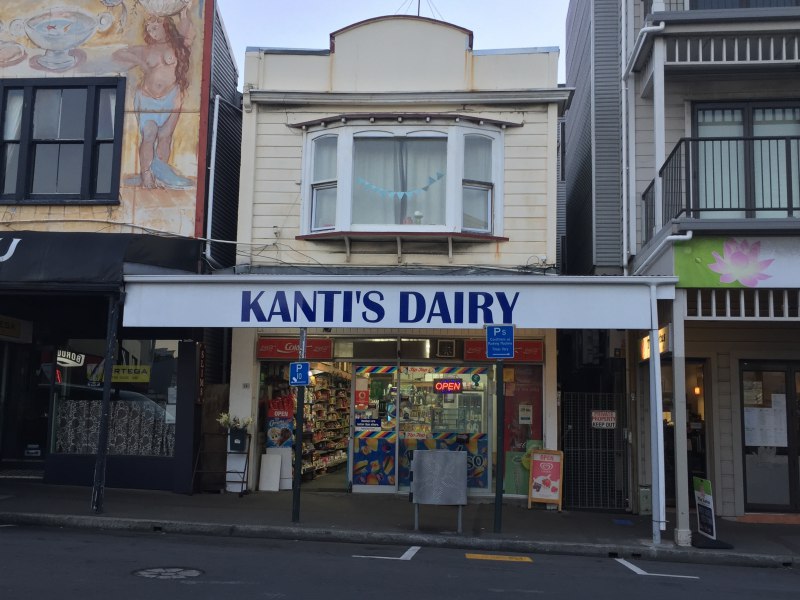
American Products Everywhere
American products are everywhere here. What I found especially surprising, though, was the number of American restaurants. If you’re craving McDonald’s, Subway, Burger King, KFC, Pizza Hut, or Dominoes don’t worry, New Zealand has you covered.
Kiwis love American sports teams. I made the mistake of assuming a guy wearing a Red Sox hat was from somewhere in New England. I didn’t actually talk to him, but most likely he was just a Kiwi wearing a hat of a popular American team. There is even a store in Auckland specializing in new and vintage American sports clothing.
Another surprising and notable item I found here was Burt’s Bees products. That’s a really specific brand and shipping it all the way here really drives the price up. A bottle of Peach & Willow Bark Deep Pore Scrub was going for $24.99 NZD or $17.46 USD. That’s DOUBLE what I expect to pay in the US. New Zealanders, is it really worth it?!
Human vs Sheep Populations
This is a thing here. About 4.7 million people make up the entire human population of New Zealand. For comparison, New Zealand has roughly the same area as the state of Colorado with about 140,000 square miles.
Side Note: Colorado still has more people by almost a million.
I can’t find a current exact figure but there are considerably more sheep than humans here. One number I’ve heard is 5 sheep to every human. Another is 16 sheep for every human. I’m not sure which one is correct but I know that sheep are everywhere. So are cows, with a total that recently surpassed that of sheep.
Kiwis love their wool and red meat.
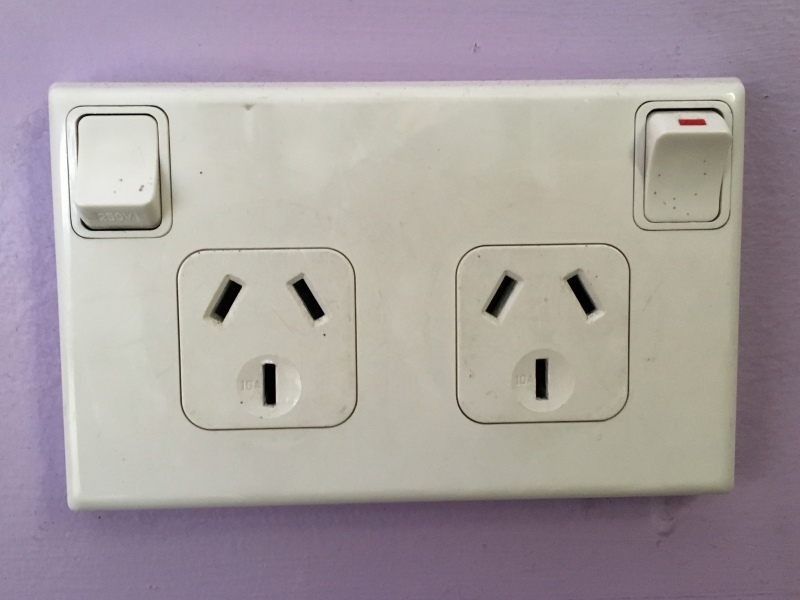
Electrical Outlets
Not only are the plugs a different shape, but each outlet has its own on/off switch. After you plug something in, you have to turn the outlet on in order to use electricity. And all switches, including light switches, need to be flipped DOWN to be turned on. In the US, we mostly flip light switches UP.
Don’t forget to pack a universal travel adapter! The adapter I just linked to has two USB ports, so a total of three devices can be charged at once.
Seasons
Since New Zealand is in the Southern Hemisphere, seasons are the opposite of the US. Landing in New Zealand in January, I arrived during the peak of their summer. This is just general knowledge (I hope) and not the quirky thing.
The thing I find quirky about seasons in New Zealand, and what breaks my little geography-loving heart, is Kiwis generalize them into groups of months with no regard to the specific dates of the equinox or solstices.
Summer = December, January, February.
Autumn = March, April, May.
Daylight hours slowly begin to lengthen or shorten on the very specific dates of the solstices, which signify the beginning of a new season. Although, in NZ autumn “began” as soon as that calendar switched over to March 1. Nevermind the 3 weeks left until the equinox – a day of equal day and night, which occurs in the spring and autumn.
Variety of Products
There isn’t a whole lot of it. The number of brands is limited here to 2 or 3 for any type of product. Think about the size of the cereal aisle at your local grocery store. Different types line the aisle from beginning to end, right? At least five different brands make the same kind of cereal.
The cereal section in New Zealand is about 1/4 of the length cutting variety down just as much. Plus, sugary cereals are mostly non-existent.
Man, I never thought I’d say it but I miss Cinnamon Toast Crunch and Fruity Pebbles.
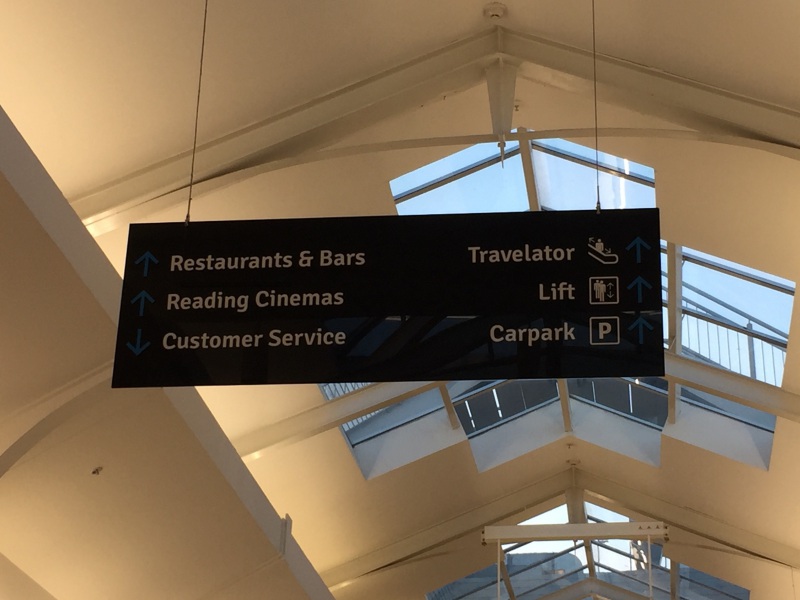
Slang
So much slang. Do we have this much slang in the US??
Some notable slang words include ‘mozzies’ (mosquitos), ‘Maccas’ (McDonald’s), and ‘sunnies’ (sunglasses). Basically, shortened and cuter versions of the real words. I’ve also heard many people say ‘chuck’ (as in to add to or toss), ‘heaps’ (a lot), and ‘chur’ (thank you).
Then there are completely different words for things. Such as ‘jandles’ (flip-flops), ‘flannel’ (face cloth), or ‘dairy’ (convenience store). Don’t mix up jelly and jam because you just might get Jello to put on your toast. Also, a ‘duvet’ includes the whole blanket, not just the part that you put a comforter in. I learned that the hard way at a hostel!
For the first month or so, I was very thrown off when greeted at a store with “Are you alright?” It is meant as “How are you?” but made me feel like I was doing something wrong. Lastly, instead of saying “You’re welcome” they say “It’s alright.”
Even More Quirky Things to Know About New Zealand
- Restaurants have much smaller portions. They don’t really do “doggy bags.”
- When you want to order take-out from a restaurant, ask for ‘takeaway.’
- Egg yolks are orange (the color they actually should be) instead of yellow.
- Soft drinks aren’t as carbonated. Even in a can or bottle.
- There are exactly 237 types of “buttery spread” to choose from. A diversion from the 2-3 option rule.
- It is rare to find a place serving drip coffee and no one has a coffee maker. It’s all either espresso or instant.
- People wear fanny packs crossbody over the head with one arm through the loop instead of around their waist. Young, old, Kiwi or German – I’ve seen everyone doing this. Confession: I even started doing it.
- Fish & Chips shops almost always carry Chinese food. What’s up with this?
SAVE THIS POST FOR LATER!
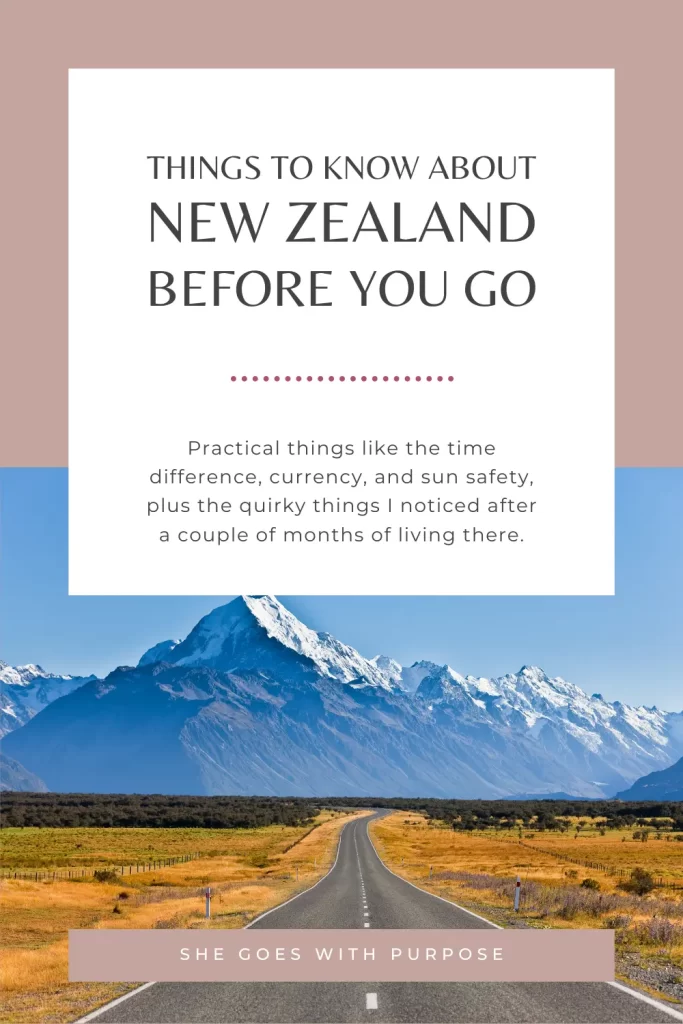
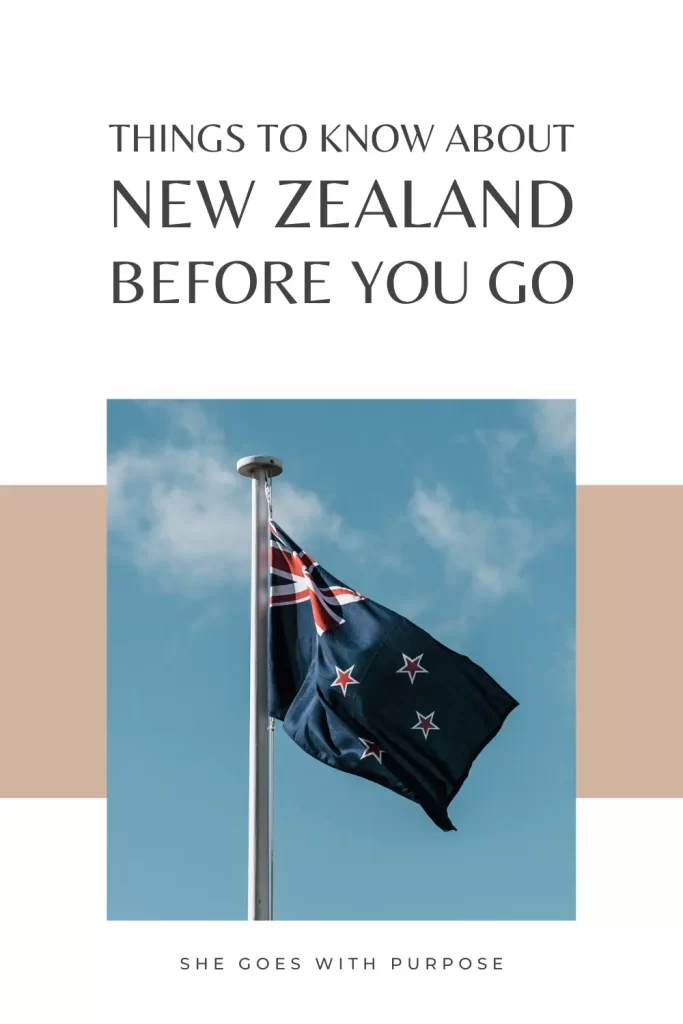
- Like
- X
- Digg
- Del
- Tumblr
- VKontakte
- Buffer
- Love This
- Odnoklassniki
- Meneame
- Blogger
- Amazon
- Yahoo Mail
- Gmail
- AOL
- Newsvine
- HackerNews
- Evernote
- MySpace
- Mail.ru
- Viadeo
- Line
- Comments
- Yummly
- SMS
- Viber
- Telegram
- Subscribe
- Skype
- Facebook Messenger
- Kakao
- LiveJournal
- Yammer
- Edgar
- Fintel
- Mix
- Instapaper
- Copy Link
In 20 years of living in NZ I have never seen anyone wearing a “fanny pack” let alone one around a persons neck….
I updated it to better describe it. It wasn’t around the neck like a necklace, but more crossbody over the head with one arm through the loop. Or maybe it’s the term fanny pack that confuses you? I think down there they are called bumbags.
It is law to stop for pedestrian’ s at a crossing, as long as you are outside the diamond that will be painted on the road. Just bad drivers that don’t!
I never knew they had another time zone with a 45 minute difference! What is the point in that?! South Australia is half an hour different to Victoria, that threw me off a lot. One thing that got me in Christchurch was all the safety posters in the hostels for what to do if there’s an earthquake. It almost felt totally normalised.
Right!? After living in California, I was pretty used to all the earthquake stuff, but I could see that being a bit shocking to first-timers. Thanks for reading!
I’m a kiwi (that’s what we call new Zealanders) and have lived here all my life so reading this post and all the comments about how weird it was gave me quite a laugh 🙂
Also we have signs about earthquakes cause in 2011 there was a massive one that demolished lots of Christchurch ( it might not be big compared to California but is still a big deal these days in nz) large earthquakes don’t happen often in New Zealand
I feel the same way when I read other’s impressions of Cape Cod, where I grew up and live now! Also, I stayed in Christchurch for 6 weeks and spent most of my time learning about the massive earthquakes, the aftermath, and the process of cleaning and rebuilding. I was truly fascinated by what the city and its people have been through and the ingenuity and creativity that resulted from the destruction.
I’m from the US and I went to NZ last year for the first time and loved it! Something I noticed, along with everything you mentioned, is most houses have separate rooms for their toilet and sink. One room for the actual toilet about the size of a small narrow closet and another room for the sink and shower or bath tub. It was weird but it grew on me! I stayed with a lot of family there and almost all of their bathrooms were made this way.
That is interesting! I didn’t run into that at any of the hostels or Airbnb houses I stayed at!